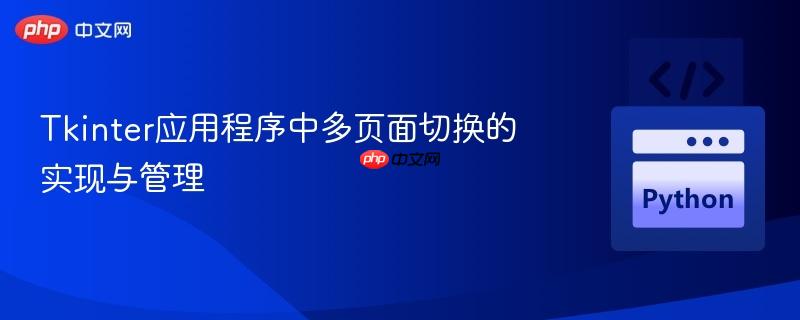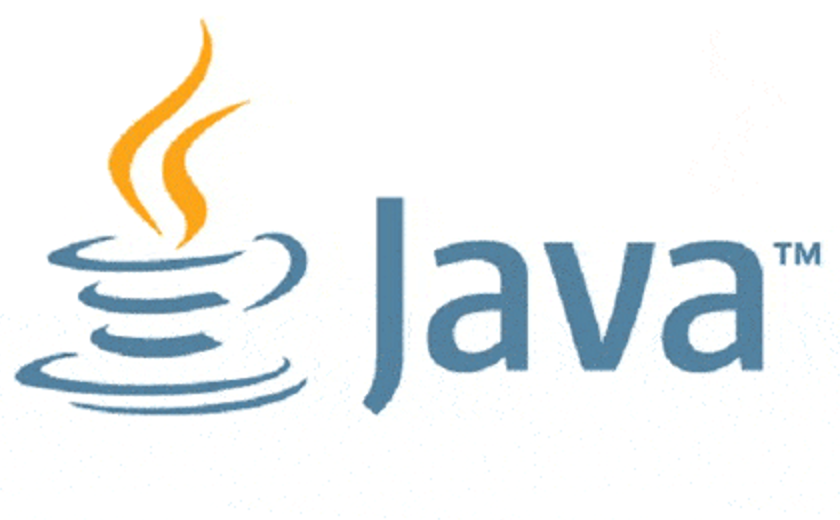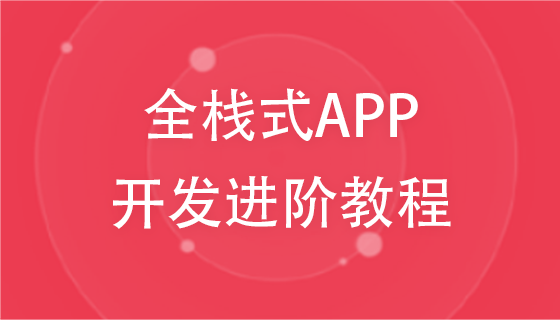
本文详细介绍了在tkinter应用程序中实现多页面(帧)切换的两种核心策略:预实例化与动态切换,以及按需销毁与重建。通过将页面管理逻辑集中到主应用程序类中,并利用`pack_forget()`/`pack()`或`destroy()`/实例化新页面的方法,可以有效地构建结构清晰、易于维护的交互式用户界面,避免了页面堆叠或显示混乱的问题,提升了应用的模块化程度和用户体验。
在开发复杂的Tkinter桌面应用程序时,通常需要在一个主窗口中显示不同的内容视图,例如主页、设置页面、数据展示页面等。直接将所有页面(通常实现为tk.Frame的子类)都pack到主窗口会导致它们重叠显示,或只有最后一个被打包的页面可见。为了实现页面之间的平滑切换,我们需要一种机制来控制哪个页面在任何给定时间是可见的。
解决Tkinter页面切换问题的关键在于将页面(帧)的管理职责从各个页面自身转移到主应用程序类。主应用程序应负责创建页面实例、跟踪当前显示的页面,并在需要时隐藏当前页面并显示新的页面。这样可以确保只有一个页面被打包并显示在主窗口中,从而实现清晰的页面切换效果。
有两种主要的策略可以实现Tkinter页面的切换:
这种方法在应用程序启动时创建所有页面实例,并在切换时通过pack_forget()和pack()方法来控制它们的可见性。
移除页面自身的打包逻辑: 每个页面类(例如Weatherpage、Infopage)不应在其__init__方法中调用self.pack()。页面实例的打包和解包应由主应用程序负责。
import tkinter as tk
from tkinter import Button, TOP, NW
# 示例页面类 - 不包含pack()调用
class Homepage(tk.Frame):
def __init__(self, parent, controller):
super().__init__(parent)
self.controller = controller # 用于调用主应用的切换方法
label = tk.Label(self, text="欢迎来到主页!")
label.pack(pady=10, padx=10)
switch_button = Button(self, text="前往天气页", command=lambda: self.controller.switch_page(self.controller.Weatherpage))
switch_button.pack(pady=5)
class Weatherpage(tk.Frame):
def __init__(self, parent, controller):
super().__init__(parent)
self.controller = controller
label = tk.Label(self, text="这里是天气信息!")
label.pack(pady=10, padx=10)
back_button = Button(self, text="返回主页", command=lambda: self.controller.switch_page(self.controller.Homepage))
back_button.pack(side=TOP, anchor=NW, pady=5, padx=5)
# 其他天气相关控件...
class Infopage(tk.Frame):
def __init__(self, parent, controller):
super().__init__(parent)
self.controller = controller
label = tk.Label(self, text="这里是信息页!")
label.pack(pady=10, padx=10)
back_button = Button(self, text="返回主页", command=lambda: self.controller.switch_page(self.controller.Homepage))
back_button.pack(side=TOP, anchor=NW, pady=5, padx=5)
# 其他信息相关控件...主应用程序类管理页面: 在主应用程序类中,维护一个current_page变量来跟踪当前显示的页面,并实现一个switch_page方法来处理页面切换逻辑。
class tkinterApp(tk.Tk): #Root Window
def __init__(self):
super().__init__()
self.geometry("700x700")
self.title('多页面应用')
self.current_page = None # 跟踪当前显示的页面
# 实例化所有页面,并将主应用实例传递给它们
self.Homepage = Homepage(self, self)
self.Weatherpage = Weatherpage(self, self)
self.Infopage = Infopage(self, self)
# 初始显示主页
self.switch_page(self.Homepage)
self.mainloop()
def switch_page(self, new_page):
"""
切换到指定的新页面。
如果当前有页面显示,则先将其隐藏。
"""
if self.current_page is not None:
self.current_page.pack_forget() # 隐藏当前页面
self.current_page = new_page
self.current_page.pack(fill="both", expand=True) # 显示新页面优点:
缺点:

功能简介:1.用户留言功能2.用户定货功能3.定制货货功能4.定制网页样式和其实设置(比如主页)5.强大的管理功能(现在的程序都是管理功能大于应用功能:)6.管理功能支持查看订货单,留言,分页,删除等功能管理页面:login.asp管理密码:admin
 0
0

这种方法在切换页面时销毁当前页面,然后根据需要创建新的页面实例。
页面类同样不包含打包逻辑。
主应用程序类管理页面: switch_page方法将销毁当前页面,然后根据传入的页面类创建新实例。
class tkinterApp(tk.Tk): #Root Window
def __init__(self):
super().__init__()
self.geometry("700x700")
self.title('多页面应用 (销毁重建)')
self.current_page = None
# 初始显示主页,通过类名切换
self.switch_page(Homepage) # 首次调用,传入的是类名
self.mainloop()
def switch_page(self, new_page_cls):
"""
切换到指定类名代表的新页面。
如果当前有页面显示,则先将其销毁。
"""
if self.current_page is not None:
self.current_page.destroy() # 销毁当前页面
# 创建新页面实例,并传入主应用实例
self.current_page = new_page_cls(self, self)
self.current_page.pack(fill="both", expand=True) # 显示新页面在页面内部触发切换时,需要传入目标页面的类名:
# 在 Homepage 类的按钮命令中: switch_button = Button(self, text="前往天气页", command=lambda: self.controller.switch_page(Weatherpage))
优点:
缺点:
通过上述方法,您可以构建出结构清晰、功能完善的Tkinter多页面应用程序,提升用户体验和代码的可维护性。
if __name__ == '__main__':
# 运行预实例化策略的示例
# tkinterApp()
# 运行销毁重建策略的示例
# 注意:为了避免同时运行两个根窗口,请注释掉其中一个
class tkinterAppDestroyRecreate(tk.Tk): #Root Window
def __init__(self):
super().__init__()
self.geometry("700x700")
self.title('多页面应用 (销毁重建)')
self.current_page = None
self.switch_page(Homepage) # 初始显示主页
self.mainloop()
def switch_page(self, new_page_cls):
if self.current_page is not None:
self.current_page.destroy()
self.current_page = new_page_cls(self, self)
self.current_page.pack(fill="both", expand=True)
tkinterAppDestroyRecreate()以上就是Tkinter应用程序中多页面切换的实现与管理的详细内容,更多请关注php中文网其它相关文章!

每个人都需要一台速度更快、更稳定的 PC。随着时间的推移,垃圾文件、旧注册表数据和不必要的后台进程会占用资源并降低性能。幸运的是,许多工具可以让 Windows 保持平稳运行。




Copyright 2014-2025 https://www.php.cn/ All Rights Reserved | php.cn | 湘ICP备2023035733号